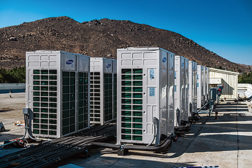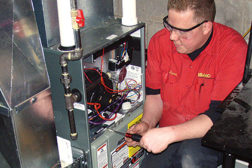Articles by Nicole Krawcke
Contractors Highlight VRF’s Versatility, Energy Efficiency, and Ease of Installation
Read More
How to Effectively Sell HVAC Efficiency
Contractors, Manufacturers Taking Steps to Train Sales Staff Amidst Growing Efficiency Market
Read More
Economic Surge Propels HVAC Contracting Profits
Contractors Enjoying Growth, Yet Remain Cautious After Great Recession
Read More
User Tested, Contractor Approved
The NEWS’ Advisory Board Recommends its Favorite Temperature-controlling Devices
Read More
Wi-Fi Thermostats Transcend the Market
Sophisticated Products Give Users Intelligent Control from Anywhere
Read More
Riverside Co. Acquires Dwyer Group — Again
The Dwyer Group’s Franchise Network Includes more than 1,600 Franchisees
Read More
Contractors Search for Role in DIY Market
HVAC Contractors Reporting an Increase in Faulty DIY Installation Calls
Read More
Contractor Benefits from Hip Environment
Russell’s Thrives Under the Guidance of Young Leadership
Read More
Solar Applications Finding a Home in Residential HVAC
Photovoltaic Investment Paying Dividends in All Corners of the Nation
Read More
Copyright ©2025. All Rights Reserved BNP Media.
Design, CMS, Hosting & Web Development :: ePublishing










